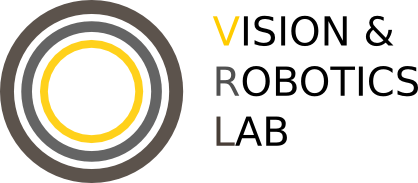Projects List
- Soft nonholonomic constraints: Theory and applications to optimal control
- Design and Modeling of a Novel Single-Actuator Differentially Driven Robot
- Depth estimation from edge and blur estimation
- Occlusion detection & handling in monocular SLAM
- Autonomous Underwater Vehicle for Monitoring of Maritime Pollution
- Teleoperation of UAV with Haptic Feedback
- Advanced Control Strategies for Unmanned Aerial Vehicles
- Ground Vehicles Driver Assistance and Active Safety Control Systems
- Pedestrian Detection
- Towards Fully Autonomous Self-Supervised Free Space Estimation
- Object-Oriented Structure from Motion
- Humanoid Fall Avoidance
Autonomous Underwater Vehicle for Monitoring of Maritime Pollution
The goal of this research is to develop a conceptual hybrid autonomous underwater vehicle (H-AUV) which combines the features of both a propelled underwater vehicle and those of an underwater glider. The platform we in-tend to build is to be equipped with chemical sensors for in-situ monitoringof maritime pollution, and performs underwater missions controlled by on-board computers with no need for interaction with a human operator. Our Frst objective is to provide a fully developed mechanical design of a concep-tual hybrid autonomous underwater vehicle. A 3-d transparent view of the vehicle is shown in Fig. 1. Next, we develop its dynamic model and performseveral simulations to showcase its locomotive capabilities in both propulsionand gliding modes.On the other hand, we address the path planning problem of the au-tonomous underwater vehicle in a three dimensional space, with a constrainton minimum turning radius in heading and pitch curvatures, and maximum pitch angle. Given an initial and fnal confgurations, we present a methodfor generating a feasible trajectory with minimum length linking the two confgurations, by using the concept of the Dubins theory. The 3D paths arecomputed geometrically by using the vehicle’s kinematics and thus makingthis method easily implemented on underwater vehicles, and much more en-cient than computational path planning methods. An example of a 3-d pathgenerated by our proposed method is provided in Fig. 2
By: Bilal Wehbe



